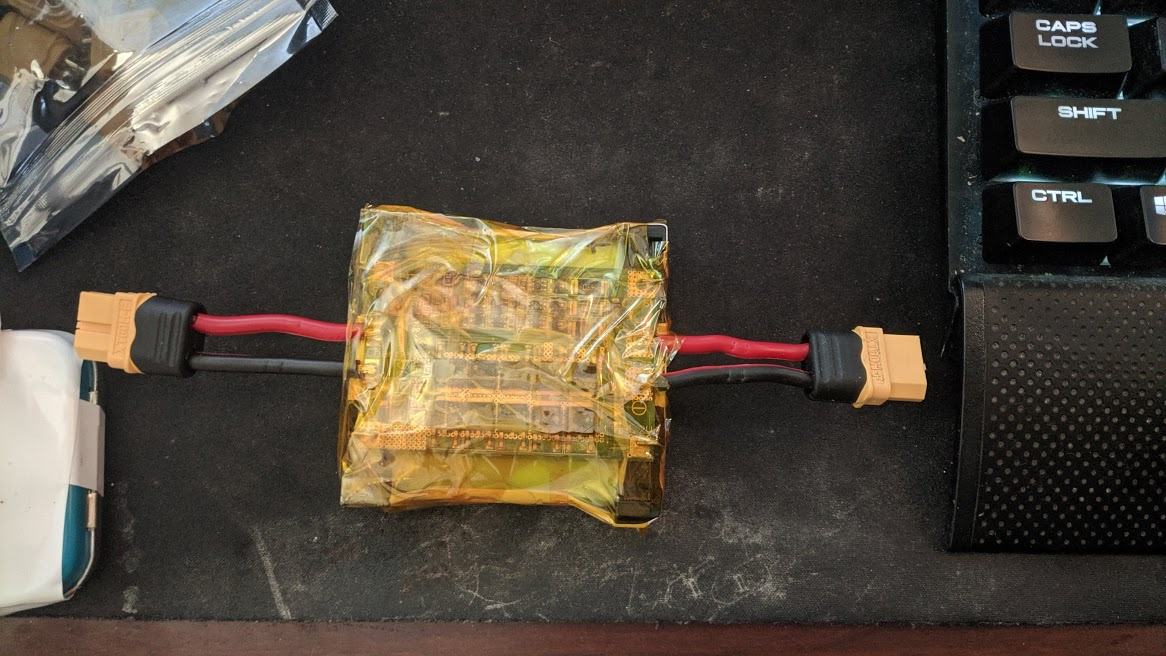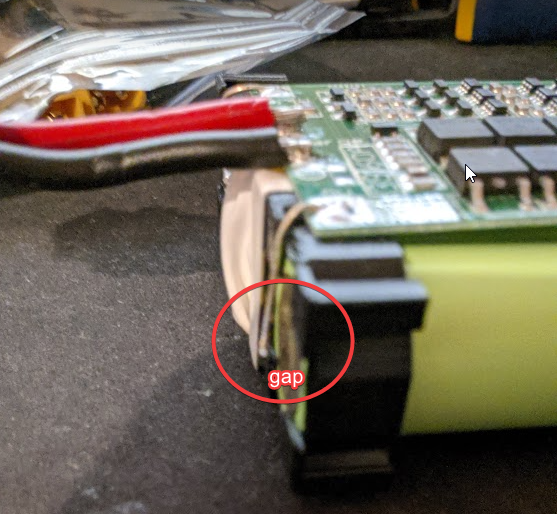Delta
1 µW
- Joined
- Feb 21, 2021
- Messages
- 2
Hello friends! First time posting in these forums.
I've been working on a project which I have been powering with a 3S li-ion battery that I made with some 18650 batteries.
 Left is Charge, Right is Discharge.
Left is Charge, Right is Discharge.
It's been powering my project for about a month and I got suspicious about how long the battery lasted so I plugged it into my ToolkitRC smartcharger today and found that it was at 7.26V (2.42V per cell!).
I set the smart charger to charge the battery through the BMS's charge port and I see it ramp up the voltage to 12.4V 0A in which the charger tells promptly me it is done charging. I've also tried plugging it in to my ISDT charger which gives me a "abnormal battery connection" before I start charging it.
What exactly did I do wrong and why did my low voltage cutoff fail? A good portion of my project relies on LVC to work.
BMS from Aliexpress: 3S 60A Balanced Edition https://www.aliexpress.com/item/4001279276213.html?spm=a2g0s.9042311.0.0.32194c4dq2jFJu
Vendor's Spec Sheet: https://i.imgur.com/y40nz5B.png
I've been working on a project which I have been powering with a 3S li-ion battery that I made with some 18650 batteries.

It's been powering my project for about a month and I got suspicious about how long the battery lasted so I plugged it into my ToolkitRC smartcharger today and found that it was at 7.26V (2.42V per cell!).
I set the smart charger to charge the battery through the BMS's charge port and I see it ramp up the voltage to 12.4V 0A in which the charger tells promptly me it is done charging. I've also tried plugging it in to my ISDT charger which gives me a "abnormal battery connection" before I start charging it.
What exactly did I do wrong and why did my low voltage cutoff fail? A good portion of my project relies on LVC to work.
BMS from Aliexpress: 3S 60A Balanced Edition https://www.aliexpress.com/item/4001279276213.html?spm=a2g0s.9042311.0.0.32194c4dq2jFJu
Vendor's Spec Sheet: https://i.imgur.com/y40nz5B.png


